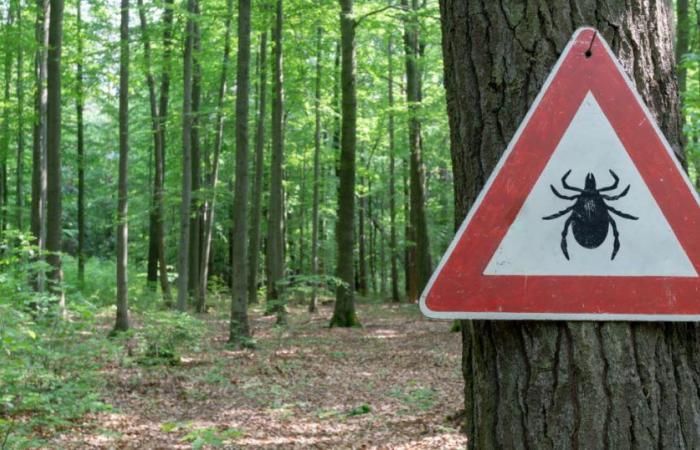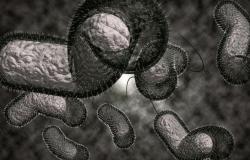Lyme disease, tick-borne encephalitis, but also Crimean-Congo hemorrhagic fever (CCHF). On October 24, 2023, Public Health France announced that it had detected the CCHF virus for the first time in France in ticks of the species hyalomma marginatumtaken from cattle.
Most often asymptomatic or paucisymptomatic (virtually no symptoms), the virus can sometimes cause hemorrhagic fever, with a fatality rate of up to 40%.
Although no human cases have yet been recorded in France, the risk of contamination is very real with the presence of the tick throughout the Mediterranean region, Corsica (where it has been established for years 50), as well as Ardèche and Drôme. Since 2013, 13 cases of autochthonous CCHF have been recorded in Spain.
Why this name Crimea-Congo?
“It was in 1944, during the advance of the Red Army, that this pathogen was identified for the first time, in Crimea (Ukrainian region annexed in 2014 by Russia). In 1969, during an epidemic in Congo, scientists realized that the virus in question was the same as that of 1944. The association of the two names gave the term Crimean-Congo hemorrhagic fever. rewinds in an article published on June 10 on the site The ConversationSimon Bessis, infectious disease doctor and researcher at the Pasteur Institute.
How is a tick infected?
The disease, which is on the list of nine priority pathogens established by the World Health Organization, is endemic and circulates from Asia to Africa, via southern and eastern Europe.
It is in these areas that ticks become infected, by feeding on the blood of their host. They are then transported by migratory birds which release them above the territories they fly over.
They can then establish themselves there. “ Today we think that climate change, which increases summer temperatures, decreases humidity, and increases minimum temperatures in winter, facilitates such settlements. explains infectious disease specialist.
How are humans infected?
Adult ticks feed on large mammals, while larvae and nymphs are found on small vertebrates. Contaminated ticks in turn contaminate the host.
The human being is an “accidental” host of the tick: he finds himself parasitized when he enters the ecosystems where the usual hosts of the tick live. Hyalomma. This is when it can become contaminated. The peak of contamination, which corresponds to the peak of tick activity, is between April and July in France.
Contamination is also possible through contact with farm animals. Human-to-human transmission also exists through contact with blood or body fluids and sometimes via contaminated surfaces and materials.
What are the symptoms ?
According to the researcher, “Approximately 80% of infected people will only have a paucisymptomatic infection, limited to a picture of flu-like symptoms, or even asymptomatic (without any symptoms). The remaining 20% of infected patients, however, present symptomatic forms that can be severe and require hospitalization.”
In this symptomatic form, we observe a phase of approximately one week with flu-like symptoms, which are not very specific.
Then a hemorrhagic phase occurs with “various symptoms such as nosebleeds (epistaxis), small red or purplish spots on the skin (petechiae), bruising, hemorrhagic lesions of the skin and mucous membranes (purpura), bleeding gums (gingival bleeding), subconjunctival hemorrhages (the conjunctiva is the transparent tissue that covers the eyeball and the inner surface of the eyelids), the presence of blood in the urine (hematuria) or in vomit (hematemesis).”
Convalescence lasts 10 to 20 days with great fatigue, hair loss, memory and/or attention problems, psychological problems, tachycardia, etc.
The diagnosis is made using a PCR test and transmitted to the National Reference Center. The samples are handled in laboratories dedicated to high biological containment NSB4 (biological safety level 4) dedicated to the study of highly pathogenic infectious agents.
What support?
The patient is isolated in a specialized place, “with teams trained in this type of pathology capable of providing care aimed at treating the symptoms (hydration, transfusion)”.
There is no clearly validated curative drug according to Simon Bessis. No vaccine has been validated by international health authorities either. Several projects are nevertheless under study.
How to protect yourself from tick bites?
In spring and summer, the tick is present in dry areas of scrubland and scrubland, pastures, hiking trails, fields, crops, orchards, vineyards, etc.
You should wear clothing covering your arms and legs and closed shoes, inspect your body and that of children returning from a walk and remove the tick as quickly as possible, if necessary, using a tick remover or fine tweezers. After removing it, disinfect and photograph the tick if possible.
The average incubation period lasts from 2 to 14 days (5 days on average). If any of the symptoms appear within two weeks after the bite, consult a doctor.






